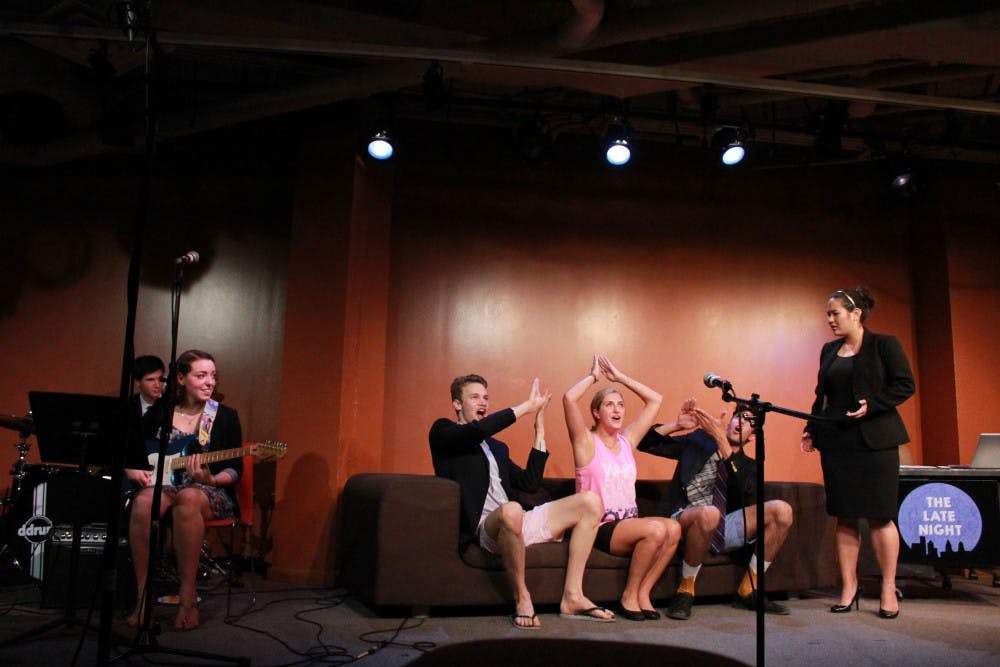Performing Arts Council members say they have faced issues related to lack of performance and rehearsal spaces for years, and they have recently taken a formal step in the hope of finding a permanent solution.
The PAC Executive Board finalized a report in March outlining the challenges of performing arts at Penn and sent it to the Undergraduate Assembly and Student Activities Council that month. The initiative to draft the report started under former financial coordinator of PAC and Wharton senior Nick Silverio, who oversaw the process of submitting the proposal and who said they are looking for the administration to intervene and create change.
The detailed 24-page report provides evidence of performing arts groups' years-long struggle for space and a list of both short and long term recommendations for the University to consider, Silverio said.
According to the report, Penn currently does not have sufficient resources or the space to accommodate the 46 student-run performing arts groups in PAC, each of which puts on, on average, 1.5 shows per academic year. There are an additional 21 student-run performing groups not under PAC that also are vying for space to rehearse.
A key issue lies in the fact that the Annenberg Center for the Performing Arts and Irvine Auditorium — the two primary rehearsal locations — often prioritize private events over performing arts groups, according to the report. The report also notes that groups are not allocated space in either of those locations when there are events.
As a result, groups have sometimes lose two to three days a week — up to 12 hours — of rehearsal time, said Chair of the Theater Arts Council and Engineering junior Susanna Jaramillo, who is responsible for allocating space to the seven theater groups, each of which is supposed to get 20 hours of rehearsal time per week.

Theater groups can also only rehearse in certain locations that are equipped with the technical needs of the group, including microphones, lighting, equipment, stage technicians, set designs, and electricians, which pose another set of challenges. Oftentimes, theater groups are assigned to practice in the Solomon Laboratories of Experimental Psychology in either the graduate student lounge or in classrooms, according to Jaramillo, a former Daily Pennsylvanian video producer. The graduate student lounge has furniture and a vending machine, both of which Jaramillo said are not conducive to a flexible practice space.
RELATED:
The seven performing arts groups at Penn you need to know about before NSO
Funny Fridays: a new open-mic night at Platt hopes to grow Penn's comedy scene
PAC groups have previously used the Pottruck Health and Fitness Center, but last semester Pottruck began phasing out the discount offered to student performing arts groups, which has seemingly increased the cost. As a result, their previous 20-25 hours per week spent in Pottruck has dropped to about seven. Silverio said these additional cost is too much for students, sometimes costing more than a few thousand dollars each semester.
“Pottruck spaces aren’t even that good because most of them have giant pillars in the middle of the room so you can’t even use the room very well, but there is such a shortage of space that it’s still something we need,” Former Chair of Arts House Dance Company and College senior Jillian Zhang said.
Zhang added that PAC is looking for unconventional spaces, too, in Huntsman Hall, Williams Hall, and spaces downtown, the latter for which she says PAC does not have the budget.
Because Annenberg and Irvine have become unreliable rehearsal spaces, Platt Student Performing Arts House is currently being used to its “absolute maximum,” said Silverio.

Director of Platt Student Performing Arts House Laurie McCall said that the office has considered renting affordable dance studios from University City Arts League located on 42nd and Spruce Streets.
While having another theater at Penn would be a "big relief," McCall said that space on campus will always be scarce.
“The way Penn is, we’d outgrow that [other theater] in a year," she said. "I mean, Penn could have everything, it could have tons of more buildings, they’re all going to get used. That’s the nature of the campus."
While the long-term solutions suggested in the report, such as adding a dance studio to New College House West, are costly initiatives, the short-term recommendations suggest smaller fixes like providing funding for additional portable mirrors, additional Pottruck rental space, and soundproofing to the Emily Sachs Rehearsal Room in Irvine.
“It is really frustrating to see other schools that have a beautiful performing arts center where all the groups can perform and rehearse in one space,” President of Penn Dance Company and College junior Fiona Jensen-Hitch said.



